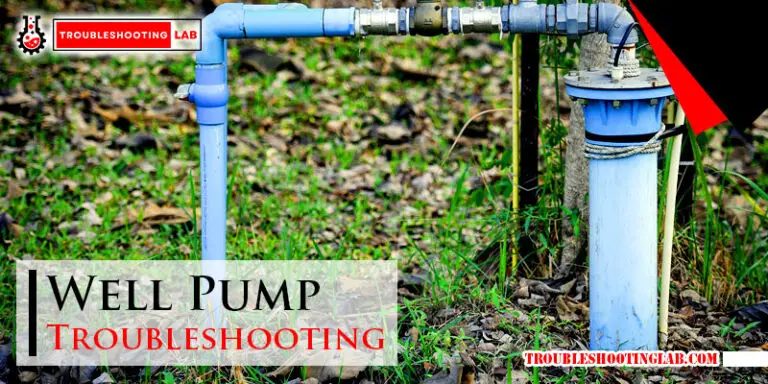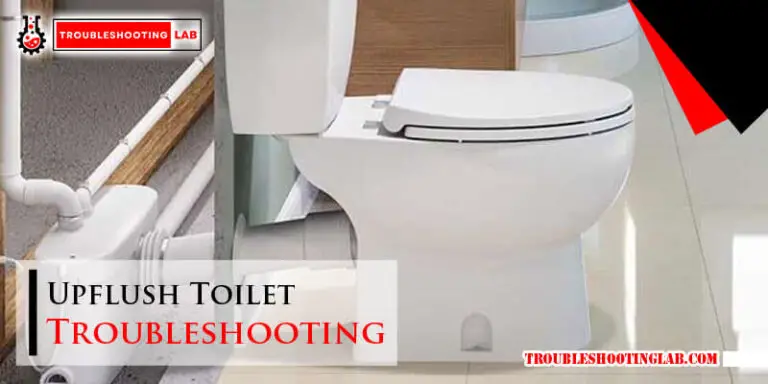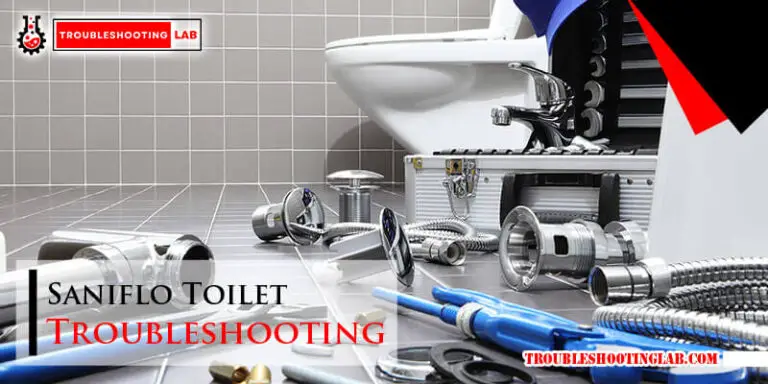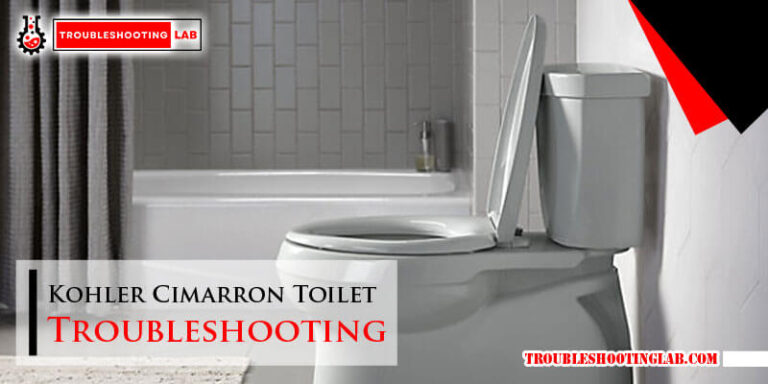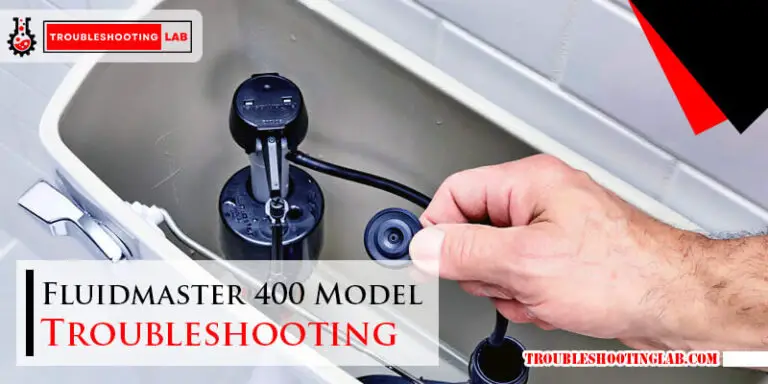Grinder Pump Troubleshooting: Quick Fixes for Homeowners
Grinder pump issues often stem from clogs or electrical problems. Troubleshooting includes checking the power supply and clearing blockages.Dealing with a malfunctioning grinder pump can be a daunting task for homeowners. These pumps are crucial for transporting waste from your home to the main sewer line, especially when the plumbing is below the main sewage line or far from it.
A properly functioning grinder pump ensures that household waste is ground into small particles and pumped efficiently. But what happens when things go wrong? Understanding the common problems and how to address them can save you time and costly repairs. Identifying symptoms early, such as unusual noises, frequent resets, or sewage backups, is key to effective troubleshooting. This introduction sets the stage for a deeper dive into the common issues that can plague grinder pumps and how to resolve them swiftly and effectively.

Introduction To Grinder Pumps
A grinder pump is a key component in waste management systems. It grinds waste into fine slurry. This slurry moves through sewer lines to treatment facilities. Grinder pumps are essential in homes with lower sewer lines.
Role In Waste Management
Grinder pumps ensure efficient waste disposal. They handle sewage from residential and commercial properties. These pumps are vital for areas without gravity-fed sewer systems.
Common Issues Faced By Homeowners
Homeowners may encounter grinder pump problems. These can disrupt waste management. Common issues include clogs, power failures, and alarms. Regular maintenance can prevent these problems.
Identifying Common Grinder Pump Problems
Grinder pumps play a crucial role in managing household wastewater. Identifying common problems early can save time and money. This guide helps spot and address issues swiftly.
Warning Signs And Symptoms
Several key indicators suggest your grinder pump may need attention:
- Unusual noises: Grinding, humming, or screeching points to mechanical issues.
- Frequent resets: Constantly resetting the pump indicates a deeper problem.
- Slow drainage: Water moving slowly hints at clogs or blockages.
- Bad smells: Foul odors suggest waste accumulation or vent issues.
- Alarm activation: Many pumps have alarms for high water levels.
When To Call A Professional
Some grinder pump issues require expert help. Contact a professional if you notice:
- Persistent problems: Issues that don’t resolve with basic troubleshooting.
- Repeated clogs: Frequent blockages could mean a serious issue.
- Water backup: Water backing up into your home is a major concern.
- Alarm sounds: If the alarm goes off, professional assessment is needed.
Regular maintenance can prevent many problems. Yet, certain situations demand a professional’s touch. Acting quickly can prevent more serious damage and costs.
Basic Troubleshooting Steps
Grinder pumps play a crucial role in managing household wastewater. When issues arise, timely troubleshooting can prevent major inconveniences. The following basic steps will guide homeowners through common grinder pump problems.
Safety First: Preparing For Maintenance
Before beginning any work on your grinder pump, safety is paramount. Ensure the power source is disconnected to mitigate risks. Wear protective gear such as gloves and goggles.
- Turn off the power at the breaker box.
- Check for any visible damage to the unit.
- Clear the area of water and debris.
Resetting The Grinder Pump
Like many household appliances, grinder pumps may simply need a reset. This can resolve minor malfunctions quickly.
- Locate the reset button on the grinder pump.
- Press and hold the button for a few seconds.
- Wait for the pump to restart.
- Monitor the pump’s performance post-reset.
If the pump does not start after resetting, further investigation is needed. Check for clogs or blockages in the pipes. Look for signs of wear in the grinder pump’s components. If problems persist, professional help is advised.
Clearing Minor Blockages
Grinder pumps play a crucial role in wastewater management. When a minor blockage occurs, quick action can save the day. This section dives into how to clear these blockages effortlessly.
Tools And Techniques
Clearing a blockage often requires basic tools:
- Plungers dislodge nearby clogs.
- Plumbing snakes reach deeper blockages.
- Garden hoses can flush out debris.
- Buckets and rags help with cleanup.
Turn off the grinder pump. Use gloves for protection. Try the plunger first. If it fails, insert the plumbing snake into the pipes. Rotate it to break up the clog. Flush the lines with a garden hose afterward. Clean up any spills with your bucket and rags.
Preventing Future Clogs
Prevention is key for a smooth-running system:
- Avoid flushing heavy paper products and wipes.
- Keep grease and large food particles out of the sink.
- Regularly clean your pump’s intake screen.
- Schedule annual maintenance checks.
Maintain a clog-free pump with these habits. Your system will thank you with reliable performance.
Electrical Issues And Fixes
Electrical Issues and Fixes are common in grinder pumps. Knowing how to troubleshoot can save time and money. Let’s explore common electrical problems and their solutions.
Power Supply Checks
First, ensure your grinder pump is getting power. Follow these steps:
- Check the power cord for damage. Replace if necessary.
- Make sure the plug is fully inserted into the socket.
- Verify that other devices work in the same outlet. This confirms the outlet’s functionality.
Use a multimeter to test the outlet’s voltage. It should match your pump’s requirements.
Circuit Breaker Solutions
A tripped circuit breaker can stop your pump. Here’s what to do:
- Locate your electrical panel.
- Find the breaker labeled for the grinder pump.
- If tripped, the switch will be in the OFF position or middle.
- Flip the switch to ON. If it trips again, seek professional help.
| Problem | Check | Action |
|---|---|---|
| Power Outage | Power Supply | Verify with a multimeter |
| Tripped Breaker | Circuit Breaker | Reset to ON |

Maintenance Tips For Prolonging Pump Life
Grinder pumps are vital for efficient wastewater management. Proper maintenance ensures longevity and prevents costly repairs. Below are expert tips to keep your grinder pump in top condition.
Regular Cleaning Routines
Cleaning your grinder pump is a key step in maintenance. Set a schedule to avoid unexpected failures.
- Inspect the pump chamber for debris.
- Clean the floats for accurate level readings.
- Flush the system with clean water regularly.
Proper Usage And Care
Correct usage can extend your pump’s life. Here’s how:
| Do | Don’t |
|---|---|
| Use water efficiently. | Flush foreign objects. |
| Dispose of waste properly. | Overload the system. |
Follow these tips to keep your grinder pump running smoothly.
Dealing With Alarms And Shutdowns
Dealing with alarms and shutdowns in grinder pumps can be stressful.
Yet, understanding how to tackle these issues is crucial for maintaining a functional sewage system.
Let’s explore the alarm systems and learn how to restart your pump efficiently.
Understanding Alarm Systems
Grinder pump alarms warn of potential problems.
They signal high water levels or electrical issues.
These alarms ensure timely interventions, preventing overflows and damage.
Key components include a float switch and a control panel.
The float switch detects water levels, while the control panel houses the alarm.
Steps To Restart Your Pump
Restarting a grinder pump requires careful steps.
Follow this sequence to ensure safety and prevent further issues.
- Check the alarm panel.
- Identify the alarm cause.
- Clear any blockages or fix leaks.
- Ensure power is available.
- Press the reset button on the panel.
- Observe the pump’s response.
If the pump does not restart, call a professional.
Regular maintenance prevents frequent alarms and shutdowns.
Keep your system running smoothly with these troubleshooting tips.
When To Upgrade Or Replace
Grinder pumps play a vital role in managing household wastewater. Like all appliances, they wear out over time. Knowing when to upgrade or replace a grinder pump can save you from unexpected breakdowns and costly repairs. Let’s explore key signs that indicate the need for a change.
Assessing Pump Performance
Regular maintenance checks help identify performance issues. Unusual noises, frequent clogs, and slow drainage signal problems. High energy bills may suggest the pump is working harder to maintain efficiency.
Use the following table to assess your pump’s performance:
| Sign | Possible Cause | Action |
|---|---|---|
| Noisy operation | Worn parts | Check internals |
| Frequent resets | Electrical issues | Inspect wiring |
| High energy use | Inefficiency | Review usage |
Choosing A New Grinder Pump
When performance checks fail, consider a new pump. Selecting the right model ensures efficient waste management. Consider power, capacity, and compatibility with your system.
Use this list to guide your choice:
- Match pump power to household needs
- Ensure the capacity fits daily water usage
- Opt for a pump with a solid warranty
- Seek models known for durability and reliability
Consult a professional for the best recommendation. They will ensure your new pump meets your home’s demands.
Professional Services And Support
Grinder pumps play a key role in managing household waste. Like all mechanical systems, they can experience issues. Professional services and support ensure your grinder pump runs smoothly. Experts tackle complex problems, preventing costly repairs.
Finding The Right Technician
Expertise and experience are crucial when selecting a technician. The right professional will have a proven track record. They offer reliable troubleshooting for your grinder pump’s unique needs.
- Certification and training
- Knowledge of different grinder pump models
- Positive customer reviews
Always choose a technician familiar with your system’s brand and model. This ensures precise and efficient service.
Warranty And Service Plans
Warranties and service plans protect your investment. They cover repair costs and regular maintenance. Knowing your coverage details is important.
| Service Plan Feature | Benefit |
|---|---|
| Regular Inspections | Prevents major malfunctions |
| Priority Service | Quick response for emergencies |
| Parts and Labor Coverage | Reduces out-of-pocket expenses |
Review your warranty and service plan annually. Update it to match your grinder pump’s needs. This approach helps you avoid unexpected disruptions.
Conclusion: Ensuring Continuous Operation
Maintaining a grinder pump ensures it runs smoothly. This part offers helpful tips.
Summary Of Key Points
- Regular checks keep the pump healthy.
- Avoid flushing hard or large items.
- Use water wisely to prevent overload.
- Listen for unusual noises, a sign of issues.
Encouragement For Routine Maintenance
Maintenance prevents surprises. A working pump is key for a happy home. Here’s how:
- Check the pump monthly.
- Clean the grinder parts yearly.
- Call a pro for odd sounds or stops.
Remember, small steps lead to big wins in pump care.
Frequently Asked Questions
What Causes Grinder Pump Failure?
Grinder pump failure can be caused by clogs due to non-flushable materials, electrical issues, or mechanical malfunctions within the pump unit itself.
How To Reset A Grinder Pump?
To reset a grinder pump, locate the reset button on the unit, usually near the breaker, and press it. If there’s no button, reset the breaker in the main panel.
Can Grinder Pumps Handle Wet Wipes?
Grinder pumps are not designed to handle wet wipes. Flushing them can lead to blockages and damage, requiring costly repairs or replacement.
Signs Of A Failing Grinder Pump?
Signs include frequent resets, unusual noises, sewage odors, slow drainage, and alarm panel warnings. Prompt attention to these signs can prevent full failure.
Grinder Pump Maintenance Tips?
Regular maintenance includes avoiding non-flushable items, cleaning the tank, inspecting alarms and float switches, and scheduling professional inspections yearly.
Conclusion
Navigating grinder pump issues doesn’t have to be daunting. Armed with the right knowledge, you can effectively diagnose and address common problems. Remember, regular maintenance is key to preventing future issues. For more detailed solutions and guidance, always consider consulting a professional.
Keep your system running smoothly with these troubleshooting tips.

